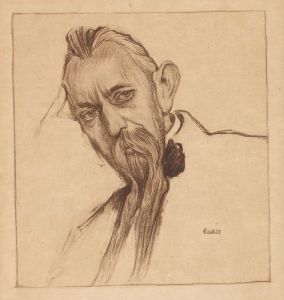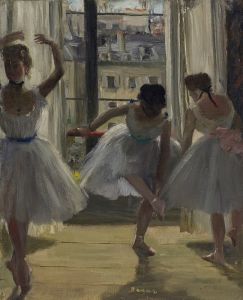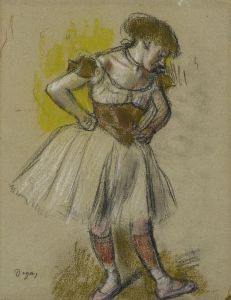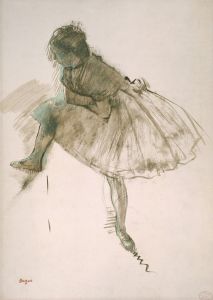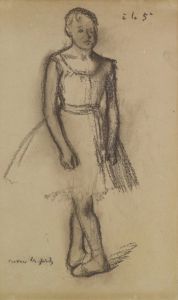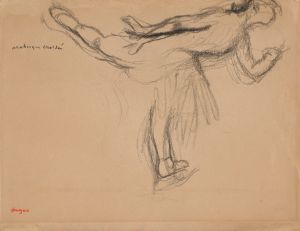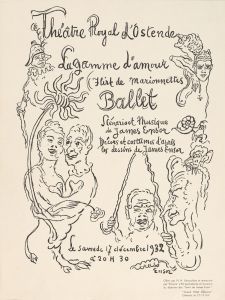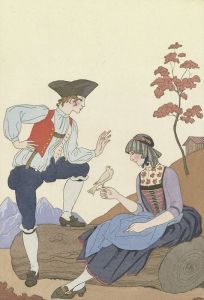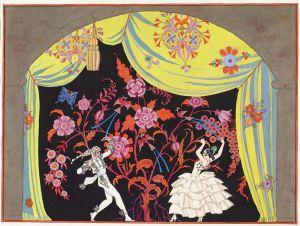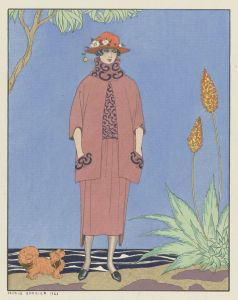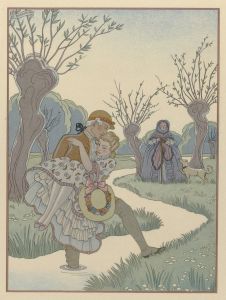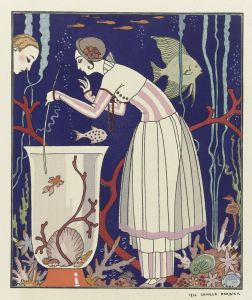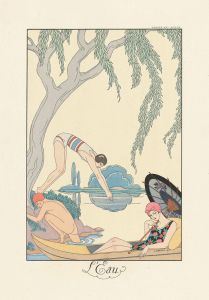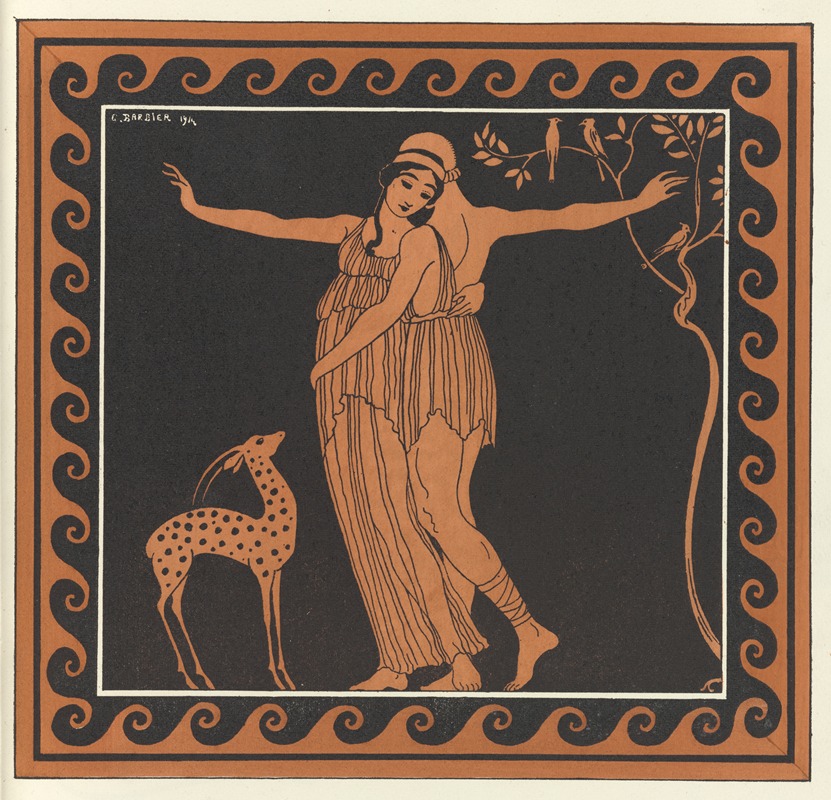
Karsavina and Nijinsky in Daphnis and Chloe
A hand-painted replica of George Barbier’s masterpiece Karsavina and Nijinsky in Daphnis and Chloe, meticulously crafted by professional artists to capture the true essence of the original. Each piece is created with museum-quality canvas and rare mineral pigments, carefully painted by experienced artists with delicate brushstrokes and rich, layered colors to perfectly recreate the texture of the original artwork. Unlike machine-printed reproductions, this hand-painted version brings the painting to life, infused with the artist’s emotions and skill in every stroke. Whether for personal collection or home decoration, it instantly elevates the artistic atmosphere of any space.
The artwork "Karsavina and Nijinsky in Daphnis and Chloe" is a celebrated illustration by French artist George Barbier. This piece was created in 1914 and is part of Barbier's broader body of work that often depicted themes of elegance, theatricality, and the performing arts. The illustration portrays two of the most renowned ballet dancers of the early 20th century, Tamara Karsavina and Vaslav Nijinsky, in their roles from the ballet Daphnis and Chloe.
The ballet Daphnis and Chloe was choreographed by Michel Fokine with music composed by Maurice Ravel. It premiered on June 8, 1912, at the Théâtre du Châtelet in Paris, performed by Sergei Diaghilev's Ballets Russes. The story of the ballet is based on an ancient Greek pastoral romance by Longus, which tells the tale of the love between a shepherd, Daphnis, and a shepherdess, Chloe. The production was notable for its innovative choreography, lush orchestration, and the collaboration of prominent artists of the time.
George Barbier's illustration captures the essence of the Ballets Russes' aesthetic, which was characterized by its opulent costumes, dramatic staging, and the blending of various art forms. Barbier was known for his Art Deco style and his ability to convey movement and emotion through his detailed and stylized depictions. In this particular work, he emphasizes the grace and chemistry between Karsavina and Nijinsky, who were both principal dancers of the Ballets Russes and celebrated for their artistry and technical prowess.
Tamara Karsavina was a Russian ballerina who played a pivotal role in the development of modern ballet. She was a frequent collaborator with Diaghilev and performed in many of the Ballets Russes' most famous productions. Vaslav Nijinsky, also a Russian dancer, was one of the most iconic male dancers in ballet history, known for his extraordinary leaps and expressive performances. Together, their partnership on stage was widely admired and contributed to the success of productions like Daphnis and Chloe.
Barbier's illustration serves as both a tribute to these legendary performers and a visual representation of the cultural vibrancy of the Ballets Russes era. The work is an example of how visual art and performing arts intersected during this period, with artists like Barbier drawing inspiration from the theatrical world to create enduring images that celebrated its beauty and innovation.





